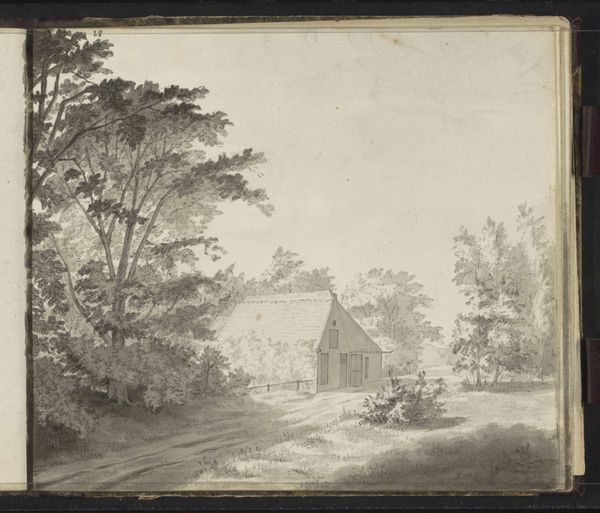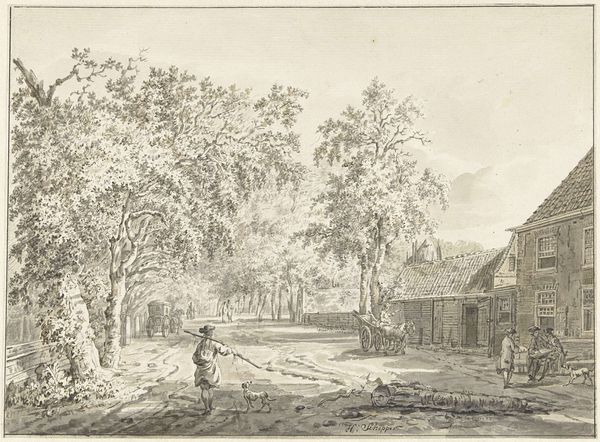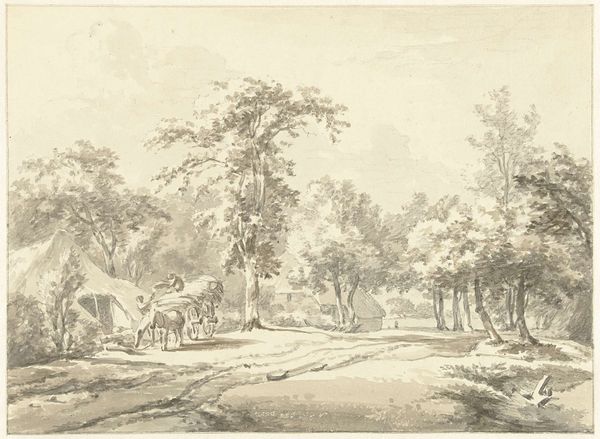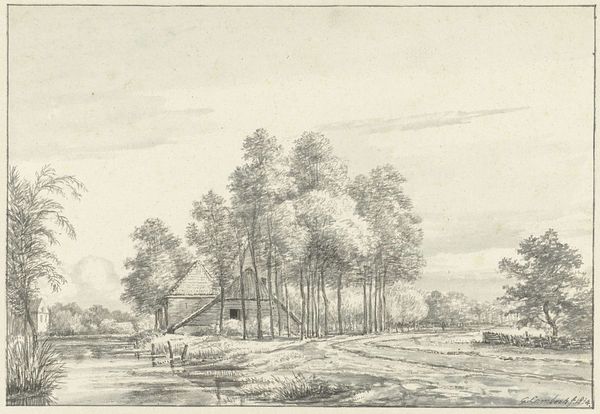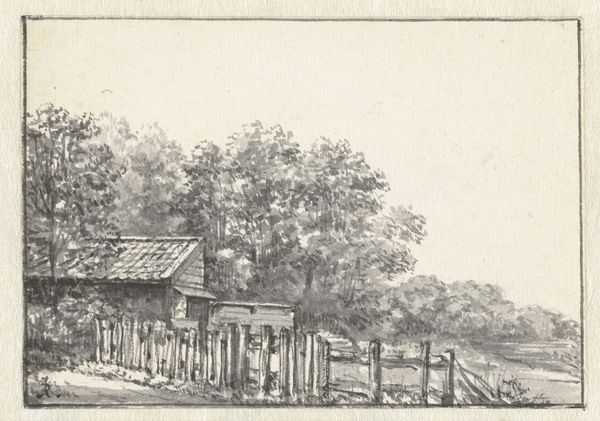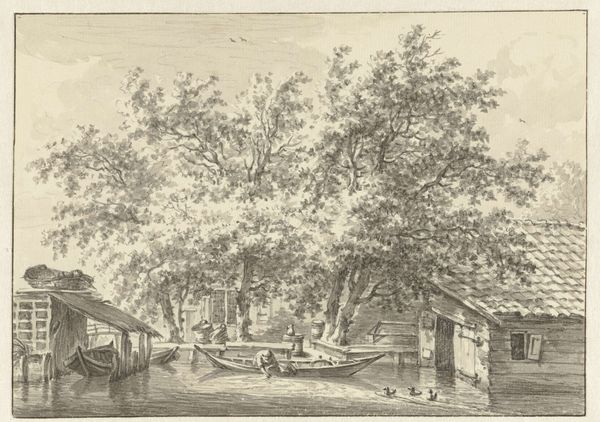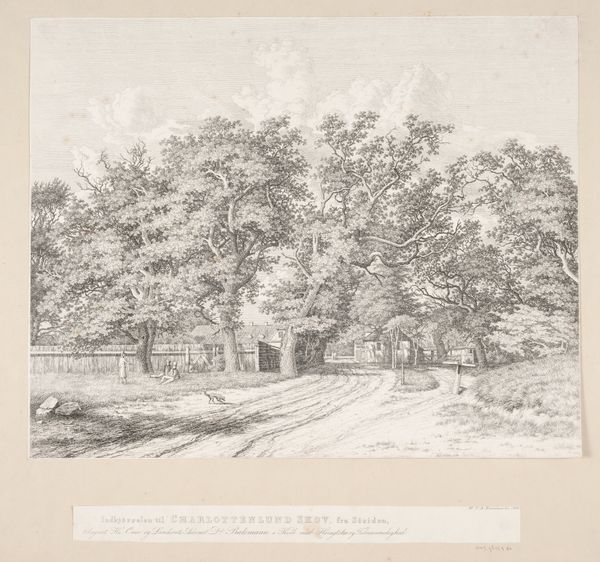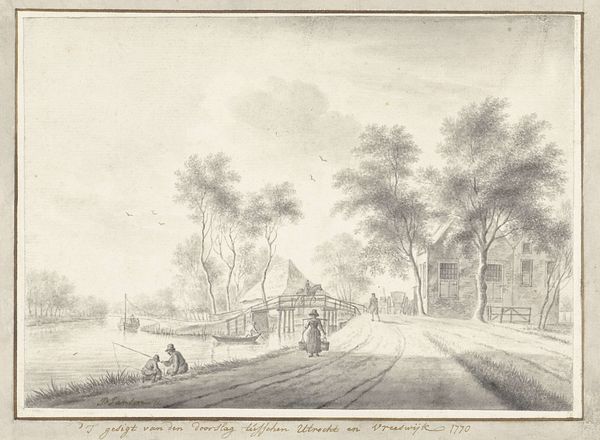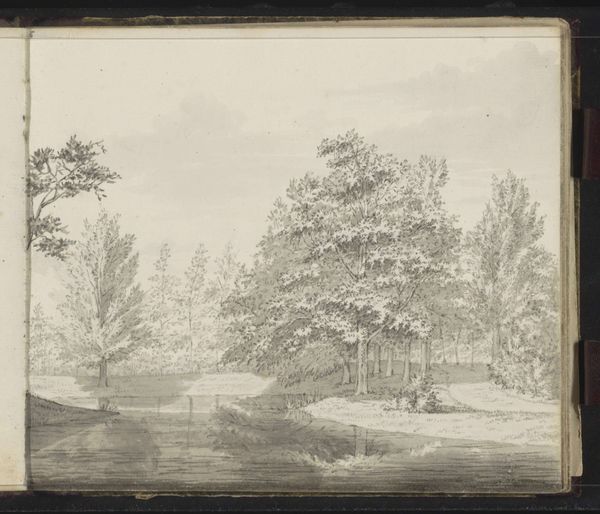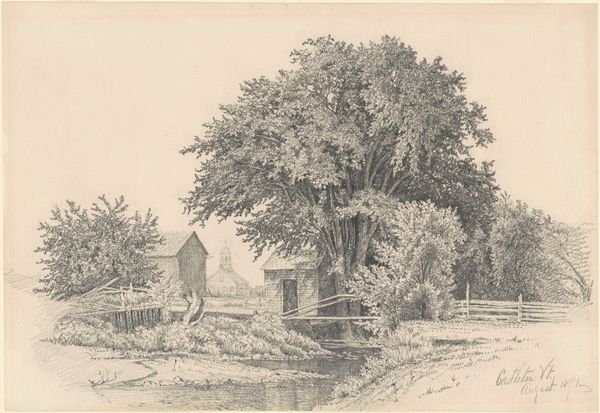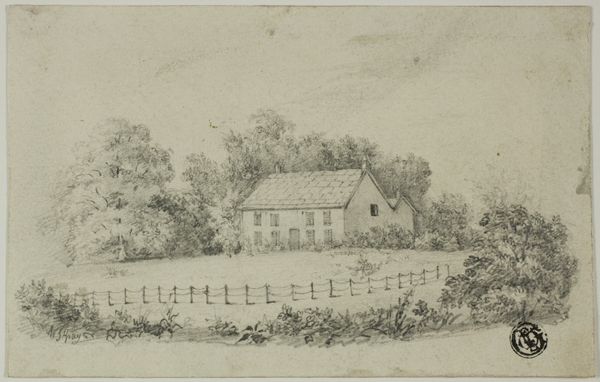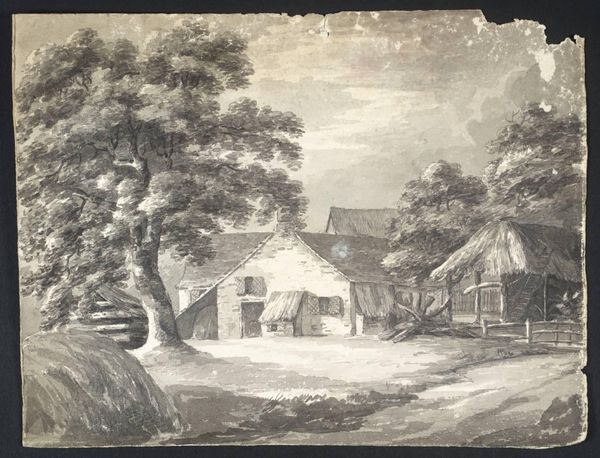
drawing, paper, ink, pencil
#
drawing
#
landscape
#
paper
#
ink
#
pencil
#
genre-painting
#
realism
Copyright: Rijks Museum: Open Domain
Curator: Hendrik Abraham Klinkhamer's "Path to a Farm," created sometime between 1820 and 1872, offers a serene view rendered in ink and pencil on paper. Editor: It has an almost ethereal quality, doesn’t it? The muted tones and delicate linework create a quiet, contemplative atmosphere. I'm struck by how ordinary the subject is and how much detail has gone into it. Curator: I'm immediately drawn to the materials themselves. The ink, the paper, the graphite—common, everyday items transformed into a visual narrative. I wonder about the paper mill where it was made, or the process of grinding the pigments for the ink, all those hands involved. Editor: And how that fits into the broader narrative of the time. This was a period of significant social and economic change in the Netherlands. Rural life was idealized even as urbanization began to accelerate. Curator: Exactly! And we can see it even in the small details like the fence. Who built it? Where did the wood come from? What were the social relations implicit in that division of land? Editor: Beyond that material reality, there is something so very constructed about this 'realism'. We know Klinkhamer belonged to Felix Meritis, the artistic society. We have to acknowledge this work as influenced by these societies where images were carefully presented and received in a particular social context. Curator: That's a valid point. But doesn't it bring up interesting contradictions? That an artist working within the context of artistic societies chooses such a commonplace subject. Almost a deliberate choice to value the everyday labor reflected in the rural landscape. Editor: Yes, absolutely. It’s as if the artist is negotiating the tension between the elite art world and the working lives of everyday people. Curator: By using such readily available materials, it blurs the boundaries of 'high' art. It reminds us that art isn't just about skill and training; it is about making. Editor: True. I find myself contemplating the path depicted here—not just a road to a farm, but a path into understanding the values and assumptions of Dutch society during that era. Curator: And I'm thinking about how the drawing brings together elements: nature, the man-made structure of the house, and those raw materials, all intersecting on this small piece of paper. It is quiet, but resonant.
Comments
No comments
Be the first to comment and join the conversation on the ultimate creative platform.
